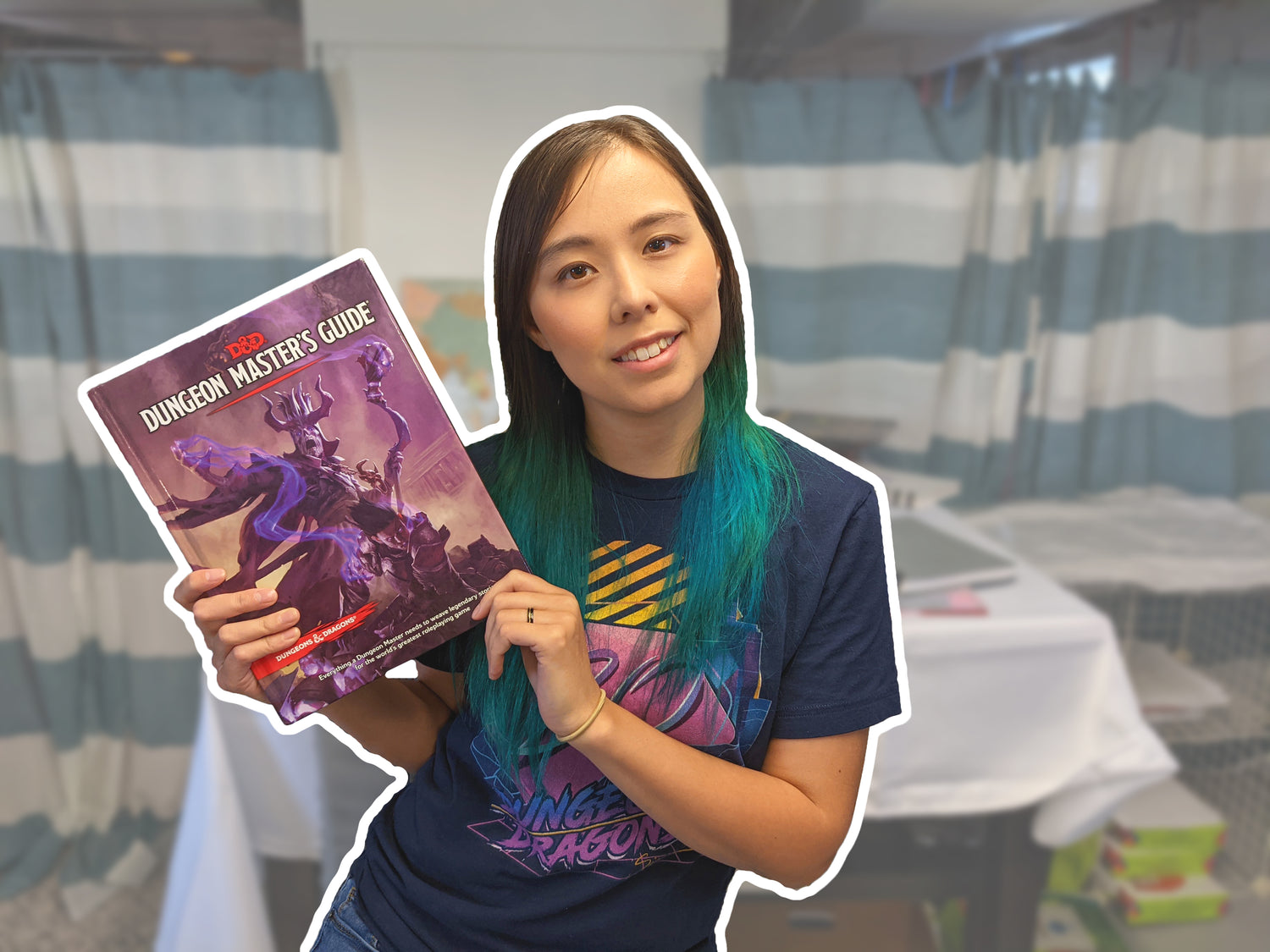
How to Be A Dungeon Master | Beginner's Guide to being a DM
Kylie DeWitt
So you want to know how to start being a dungeon master. Being a dungeon master is a rewarding and fun experience, but it can take a bit of work. With the game so dependent on having a DM (or Dungeon Master), it might look intimidating to start. To help get you started, we've got some beginner DM tips. We’ll look at what a DM is, what it means to be one, as well as what you need, how to prepare, and how to run your first session. Then to finish it off we’ll touch on how to start running a full-blown campaign.
You can also watch this content on our youtube channel!
What is a Dungeon Master?
If you’ve never played Dungeons and Dragons, or are a complete beginner, the Dungeon Master is essential to running the game. You can play a game or session without a cleric or fighter, but you cannot play the game without the DM. The Dungeon Master is the narrator of the fantastical story you and your players are about to create.
Think of Dungeons and Dragons as a novel. Your players create a single character in the story that they control. These would be the heroes or main characters in a novel. The rest of the story, the world-building, the NPCs, the monsters, and the plot, are all in the hands of the Dungeon Master.
That may seem intimidating, but luckily for beginners, there are plenty of pre-created modules. These do the heavy lifting of world-building, NPC & monster creation, and plot for you. This still leaves narration, or the moderating of the game, in your hands. You control the pace of the story and the interpretation of the rules.
The Dungeon Master has the Power
When you decide to take on the role of Dungeon Master, you’re now in control of the game. While this power can be exciting and fun, it’s also a responsibility. The setting, the action, the rules, and even the fun are all stemming from you! Sometimes it requires a little upfront preparation.
Before you jump into the first session, make sure that you’re mentally ready. You'll need to take on a little extra work, but not as much as everyone makes it seem). It's your job to ensure that your players, and yourself, can enjoy the magic of D&D. You have the power to make a memorable experience!
Remember that you are not competing with the players! While you may want to destroy your players in the fiery mess of a meteor storm, your goal is not to destroy all the characters in it. Your goal is to convey a story. That can mean providing an easy win or a solid defeat. Either way, you and your players are building a compelling story together!
What You Need to Run Your First Session
Whether you’re a complete beginner or somewhat familiar, there are a few things you need. Aside from a Dungeon Master (aka you!).
-
Players - For your first session, you need to determine the number of players you want to have in your adventure. A typical party is anywhere from 2-8 players. You can have more or fewer players than this. Note that the fewer players the harder the encounters and role-playing will be. The more players the harder the encounter balancing and story management will be. For your first session as a DM, we recommend choosing 4-5 players. This will give you a good balance and prevent you from having to adjust pre-made modules for more players.
-
The Rulebooks - While it’s not necessary to memorize all the rules before your first session (or ever for that matter), you do need a place to start. Ideally, you’ll need the Player’s Handbook, the Dungeon Master’s Guide, and the Monster Manual. This is the most you need to spend on setting up for the game (with the exception of at least one dice set). If you’re looking to try it out before you buy, consider borrowing the books from a friend. Another low-cost option is the official starter kit. It gives you a truncated set of the rules (as well as other materials) to help you get started for your first session. If you buy no other rulebook, at least pick up the Player’s Handbook. This gives you all the basic rules you need to play.
-
Dice - This is the only other material that you will need that will cost money. In the starter set, one set of die is provided for you, but if you’re not using a kit then you’ll want to pick up a set of dice. The price on this ranges, but a cheap set that will get the job done can be under $10. Like these.
-
Character Sheets - In the starter kit, characters are created for your players. But if you’re not using a kit, then you'll need a set of character sheets for your players. You can photocopy this out of the Player’s Handbook, or you can find downloadable PDFs online. You can purchase redesigned character sheets from small businesses, as well.
-
An Adventure - The key to a good novel is the plot! An adventure can be pre-made or you can come up with one completely on your own. While it's tempting to write your own adventure, if this is your first time, we recommend a pre-made adventure. The rest of this section focuses on using a single adventure (or smaller set of adventures). You’re welcome to buy a pre-made module to start with as well. There are official modules like Curse of Strahd or Tomb of Annihilation. If you’re looking for one-shot material, instead of a full-fledged campaign, there are low-cost online resources. Some websites even offer them for free. One great place to look is DMsGuild.com
Other Important, but Optional Materials:
There are a few other things you could purchase (or borrow from a DM you know). These are completely optional. You may want to consider adding these to your arsenal if you plan on DM-ing in the long run.
-
DM Screen - DM screens serve two purposes. First, it keeps your notes, maps, and story plot a secret. This lets you surprise your players with an ambush, hide the motives behind your big bad evil guy, and more. Second, it can provide useful charts and tables. These quick reference tools display common rules, preventing you from spending 10 minutes in the player’s handbook. You can purchase these online, or make your own DM Screen with online tutorials.
-
Minis and a Battle Grid - For your first session, it’s okay to play using theater of the mind. But a battle map and minis can help at the beginning with the placement of the enemies. You don’t have to spend a fortune on minis and a battle map though. In fact, you can make your own grid paper and paper minis for the occasion. If you’re looking to spend money on a battle map, I recommend this one, which I use in my campaigns and one-shots. It’s a dry erase map that’s easy to transport and big enough for most encounters. Y0u can also print grid paper here.
Preparing for Your First Session
You’ve gathered your materials! Next, it’s time to prepare for the session. You can do as little or as much preparation as you’d like. You can improvise everything, or plan every detail. We recommend aiming for somewhere in between. No planning can make for a rough and chaotic adventure. Too much planning can lead to your characters derailing the entire plot and story (and a frustrated DM).
Remember that you cannot plan for everything. Your players are going to think of strange new ways to destroy everything you’ve planned for them. The key is to be flexible and to remember that you have control over the direction your players take.
Read and Reread Your Adventure
Whether you create your own or use a pre-made module (recommended), you need to have a good understanding of the adventure. We recommend reading your entire adventure and then re-reading it at least once.
Don’t worry about memorizing your adventure! Consider your module as guidelines for the story. You don’t have to follow everything exactly to the letter. Your players won’t let that happen anyway! They’re sure to come up with ways to defeat that devil that you never considered. (Like using a vial of dragon blood to call forth a mystical unicorn to slay it… true story.)
Understand the Basics of Ability Checks, Saving Throws, and Combat
If this is your first time playing D&D altogether, you want to make sure that you understand the basics of the game. The Player’s Handbook covers this. Focus on the rules necessary for play, such as: ability checks, saving throws, and combat. The rest you can learn later.
You don’t have to have all the rules memorized to be able to play D&D! In fact, most DMs don’t know all the rules. The cool thing about D&D though is that you can improvise! Unless you’re playing for the Adventure League, the rules are flexible and at the end of the day, what the DM says goes!
Dungeon Masters make mistakes too! So don’t be afraid to make mistakes. You can always look it up, whether that’s in the moment or after the game. Just don’t let the rules prevent you and your group from having fun.
If you’re looking for a quick rundown of how combat works in D&D, I recommend this series of tutorials on YouTube. They are very easy to follow and give you a good overview, whether you’re a DM or a Player.
Understand Your Player’s Characters
You don’t have to understand every character class in Dungeons and Dragons to be able to be the Dungeon Master. Instead, focus on the characters that will be in your session.
For the starter kit, this means reviewing the pre-made character classes. If you’re not using a kit, have your players choose a class ahead of time. You may want to work on building the characters together if they are also beginners. For a full-fledged campaign, we recommend starting with a session zero for that reason. For a one-shot or short-term adventure, having your players create characters in advance is also reasonable.
Read through your character’s classes in the player’s handbook. This will give you a rough understanding of what to expect in your session. You don’t need to memorize any features. But it’s handy to know that if your group has a rogue. They may try to pickpocket the enemy (or each other, or slip a business card into everyone’s pocket). You'll need to know what ability checks to ask your players to roll (sleight of hand check in this case.)
Understand Your Important NPCs
Many adventure modules contain descriptions and important information about the NPCs. This can sometimes include bulleted talking points. Make sure you have these handy during your session. Also note that because an NPC has a bullet point about what they are hauling to the next city, doesn’t mean they’ll talk about it without prompting. Let your players ask questions and see where the conversation goes.
You don’t need to be a voice actor (or actor) to play a good character. There are ways to give your character a realistic feel without that. Describe a certain facial feature or the way they talk. Describe how they hold themselves or if they make eye contact or not.
Try to improvise! If your players ask what kind of flower they like, but that’s not on the bullet list, make something up! If your players ask about the NPC’s outfit, describe it on the fly. It can be hard at first to improvise during the game, but don’t let that discourage you. Improvising will come with time.
Prepare an Introduction
For your first session, you may want to include an introduction. This could include your Dungeon Master style as well as the adventure intro. This is the time that the Dungeon Master has the most control of the game. Try to set the tone for the session!
Be sure to lay the groundwork for your session with what you expect from your players. For example:
-
Be respectful to each other and to me, the DM.
-
No sexually explicit, or controversial topics at the table, please.
-
Though I am new to DM-ing and appreciate clarification on the rules, I still have the final say on what goes.
-
I’d like to limit the use of technology at the table so that everyone can focus on the game.
-
Make sure you start thinking about what you want to do on your turn before your turn starts in combat.
These are a few examples that will help you ensure that everyone at the table has fun.
Once the groundwork is set, dive into the adventure by setting the scene! Have your players recently finished speaking with a wealthy patron who has asked them to search for their missing daughter? Or your party is enjoying the pleasures of harvest festival activities when a horde of kobolds crashes the party! The introduction is your chance to set the scene for the adventure. Make it count!
Expect Most of Your Preparation to Go to Waste
If you’ve talked to any DM ever, they’ll tell you the same thing, expect the unexpected. While your written module will explain some of the possibilities your players might take, it cannot cover everything. Trying to prepare all the different possibilities is also a fruitless endeavor. Instead, prepare to make adjustments on the fly.
It’s okay to ask the players to let you think about it for a minute. It’s also okay to tell your players no. When in doubt, roll for it! Set a DC (difficulty class): 10 easy, 15 moderate, 20 hard, 25 very hard, 30 nearly impossible. If they roll that nat 20 to leap the 15-foot crevice with a rope, then maybe they make it. Or maybe they realize as they size it up to jump that they’d never be able to make it without horrible spiky doom. You set the rules. You have the power!
Running the First Session
So you finally have all the pieces together. Now it’s time for the real fun: seeing how your players mess everything up explore and problem-solve in your adventure.
Start by going over your expectations and your intro. This may be a good time to let your players introduce their characters. If they don’t know what to say, that’s okay! Ask them to start with their name, race, and class. That will be enough for a one-shot or the first session.
Remember to try to improvise! Not everything will go according to the written adventure. Be flexible and allow your players to try new and creative ways to solve the puzzle or defeat the enemy.
Don’t know a rule? Don’t worry about it! At the end of the day, you have the final say on rulings (it’s part of that whole having the power thing we talked about). You’re human, not a computer, so let yourself, and others at the table, make mistakes.
Have Fun! This is the most important part of D&D! As long as you and your players are enjoying the experience, it doesn’t matter what rules you messed up or plot-device you forgot. Dungeons and Dragons is a game. You play to have fun!
Starting Your Own Full-Fledged Campaign
If this is your first time behind the screen, we recommend starting with a smaller adventure like a one-shot or the starter kit. But for those of us who know they’d love to run a full D&D campaign, here are some additional tips.
Prepare Your Adventure
This is the same as you would do for a one-shot or smaller adventure. We’d recommend starting with any of the official pre-made modules. If you want to start your own homebrew campaign, we will write a blog on that in the future. Know that if you choose this route, you’re choosing to do most of the heavy lifting. Running a module will have the story, setting, enemies, and encounters set up for you. They will also give you a good idea of the structure of a campaign.
As we said before, read the whole adventure, twice! This will allow you to drop hints and clues later in the story into the beginning adventures. It also allows you more flexibility with how the adventurers reach the next dungeon if they steer off the clue-ridden path. Don’t worry about memorizing the whole adventure though! You can always reference the book while at the table!
If you’re creating a homebrew world, write it backwards! How do you want your story to end? What conflicts will the adventuring party encounter along the way? We’ll have more tips about how to write your own homebrew in the future.
Schedule a Session Zero
We’ll have a whole video and post about this, but if you’re starting a new campaign you should consider a session zero. In session zero, you will be able to take your introduction and expound upon it. Use session zero to:
Lay down your expectations. Session zero is a great place to lay the groundwork for your expectations. Consider player behavior and some of the rules we mentioned earlier.
Get to know what your players want. It’s also a great opportunity for your players to let you know what they want out of a D&D campaign (if they know that is). Some players may be in it for the role-playing, others may want to battle everything in sight. Session zero will let you get a feel for what your players will consider fun to do throughout the campaign.
Let your players get familiar with each other. Whether it’s a group you just met or have been friends with for a long time, have an introductory meeting will allow your players to feel more comfortable playing together.
Introduce your players to the world. Now’s the time to set the scene for the kind of world your players will be in. Is it a war-ridden world with multiple factions vying for the same land? Or is it a peaceful world full of magical studies?
Have your players create characters. With all your players together, have them start to create their characters. This will help ensure that you don’t have a party full of clerics, but also allows you to help each other in the creation process.
Don’t plan to start the campaign. Focus on character building and setting the boundaries for your first session. It will allow all your players to get familiar with their classes before throwing any encounters at them.
Prepare for Your First Campaign Session
Start preparing for your first campaign session by writing out these things:
-
Introduction - This is the moment where you have full control, which you may not have for the rest of the session! Set the scene.
-
Important NPCs - Who do you think the characters will encounter this session? Write those down and any important information they might have.
-
Understand Your Setting - Review where your adventurers will be starting. How that might affect today’s first session? Your players may have a lot of questions about the world they just started exploring!
-
Clues or Secrets - What clues or secrets will your character run into this session? These could have to do with the overall plot, or just this small quest they received from a local innkeeper.
-
Encounters - What sort of monsters or enemies will your players be fighting? Review those and be sure to keep their stats handy.
Can I be a Dungeon Master If I’ve Never Played D&D Before?
The short answer is yes! Everyone has to start somewhere. While it’s possible to start without any experience at all, you may want to try being a player in another campaign first. Experience does help, but isn’t necessary. You can find plenty of videos on YouTube or websites that will help you digest the rules. We recommend at least watching this series if you have never played D&D before.
Being a Dungeon Master Means Power, Responsibility, and Organization!
We hope that this post has helped you make the first steps to running a D&D game. Whether you’re running a one-shot, short-term adventure, or a full-fledge campaign, these DM tips will help you start. If you’re looking for a way to organize all these things, consider purchasing our Dungeon Master’s Guide to Adventure. It has all you need to keep track of your world, your NPCs, your encounters, and your sessions in one place.
While designed to help you become start being a dungeon master, this post is not all-inclusive. Let us know on social media what you think we should add!


